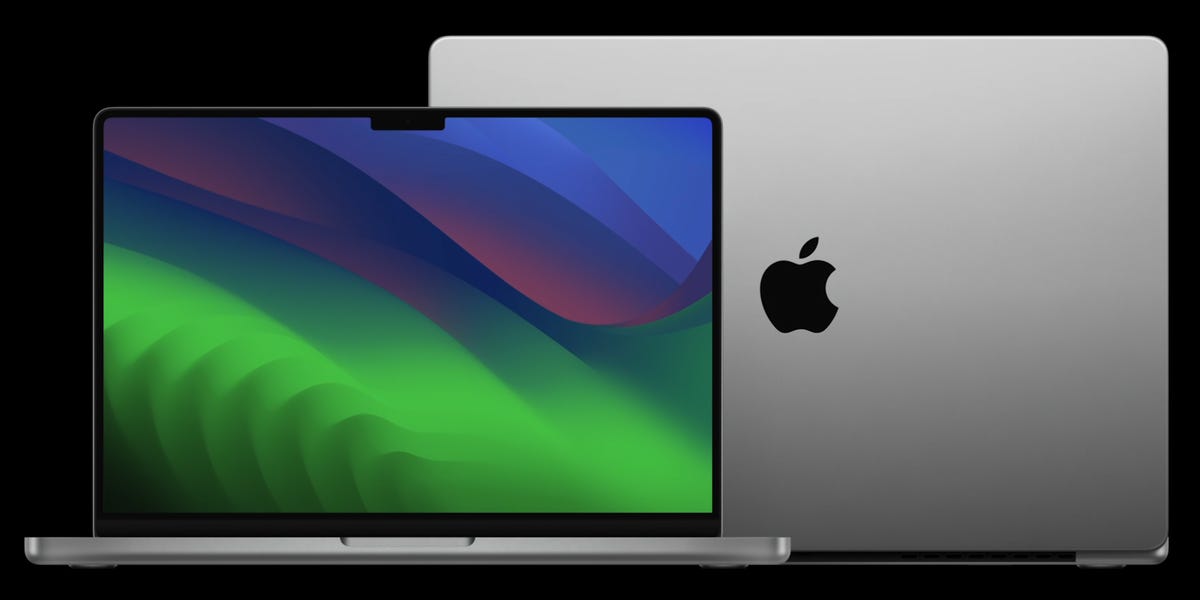When you buy through our links, Insider may earn an affiliate commission. Learn more
At its “Scary Fast” event on Monday, Apple unveiled new versions of its wildly popular MacBook Pro laptops and iMac desktop. These models mark the debut of Apple’s new M3 processors, which promise big improvements in both speed and graphical power compared to current M2 chips.
The new M3 MacBook Pro and iMac models are all open to order from Apple, Amazon, and Best Buy, and all models will be available starting on November 7. The new MacBook Pro models start at $1,599 for the 14-inch model and $2,499 for the 16-inch model, while the new iMac model starts at $1,299.
These aren’t the first Mac computers Apple has announced this year. In January, we saw new versions of the MacBook Pro with M2 Pro and M2 Max chips; and in June, Apple unveiled a new MacBook Air model, alongside the high-end Mac Studio and Mac Pro desktops.
Here’s a rundown of everything you need to know about Apple’s new M3 MacBook Pro and iMac models.
Comparing the new MacBook Pro models
Apple revealed two new versions of the MacBook Pro: One with a 14-inch screen, and one with a 16-inch screen. They both look the same as the previous MacBook Pro models, but are powered by a new Apple Silicon chip called the M3.
Like the M1 and M2 chips that preceded it, the M3 is what’s called a system-on-a-chip (or SoC). This means that the MacBook’s entire system — the CPU, the graphics card, the memory, everything — is contained on that tiny chip, about as small as a fingernail. Apple claims that the M3 is significantly more powerful than the M2, with performance increases of up to 30%.
The MacBook Pro’s M3 chip comes in three different versions: The standard M3, the more powerful M3 Pro, and the premium M3 Max. You can buy the 14-inch MacBook Pro with an M3, M3 Pro, or M3 Max; and you can buy the 16-inch MacBook Pro with an M3 Pro or M3 Max.
All three models are strong enough to support intensive multitasking and high-end video editing, including ray tracing, but the M3 Pro and M3 Max will likely guarantee faster boot-up times and more stable 4K and 8K video support. If you’re a professional graphic designer, videographer, or 3D animator, you’ll likely want at least the M3 Pro.
The M3 Pro and M3 Max MacBook Pros are also available in a new color: Space Black.
What will the new M3 MacBook Pros cost?
The 14-inch MacBook Pro model starts at $1,599, and the 16-inch MacBook Pro starts at $2,499.
This means that the new base 14-inch model (M3) is $400 cheaper than the base model of the previous generation (M2 Pro), which started at $1,999. And the base 16-inch model is the same price as the base M2 Pro model at launch.
All of the new MacBook Pro models are available to order now from Apple, Amazon, and Best Buy, with availability starting on November 7.
Apple 16-inch MacBook Pro with M3 Pro or M3 Max
The new M3 Pro and M3 Max chips on the 16-inch MacBook Pro should offer improved performance for intensive tasks like video editing and 3D graphic design, relative to the M2 and M1 generations.
Breaking down the new iMac computer
It’s been over two years since Apple released an updated version of the iMac, its line of all-in-one desktop computers. But at Monday’s event, we got our first look at the new 24-inch M3 iMac.
You can order the M3 iMac right now from Apple, Amazon, and Best Buy, with availability starting on November 7. It starts at $1,299 — the same price as the older M1 iMac at launch.
The new iMac largely looks the same as the M1 iMac, and it’s available in up to seven colors.
But on the inside, it’s now running on the new M3 chip, which should massively boost performance compared to the M1 chip that iMacs were stuck with before. This means apps will start faster, 4K videos will run more smoothly, and you’ll be able to run more apps at once without lag.

Apple 24-inch iMac with M3
The new iMac’s M3 processor should provide vastly improved performance relative to the M1 and Intel processors of previous models, making Apple’s all-in-one desktop faster and more efficient in a wide array of tasks.
Read the full article here





